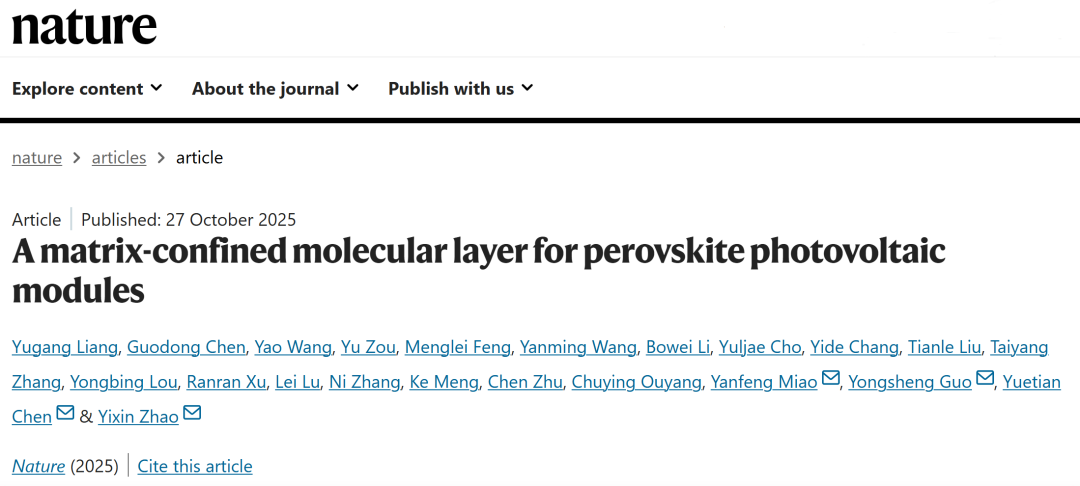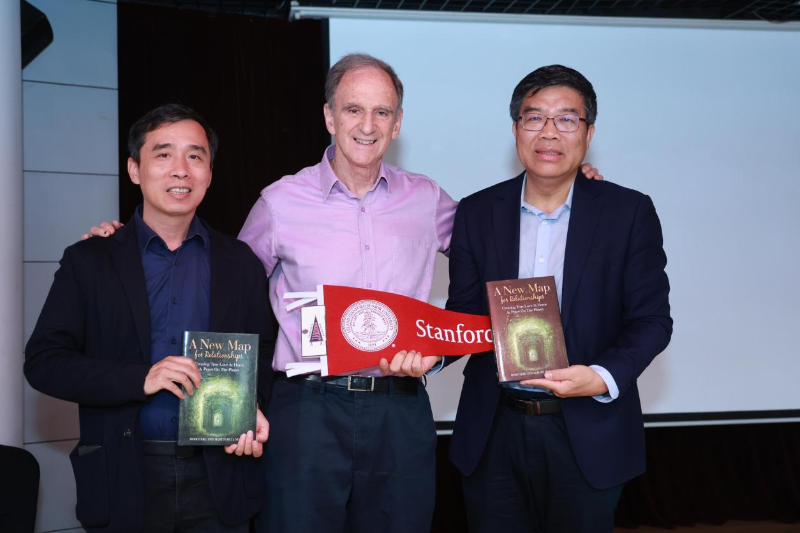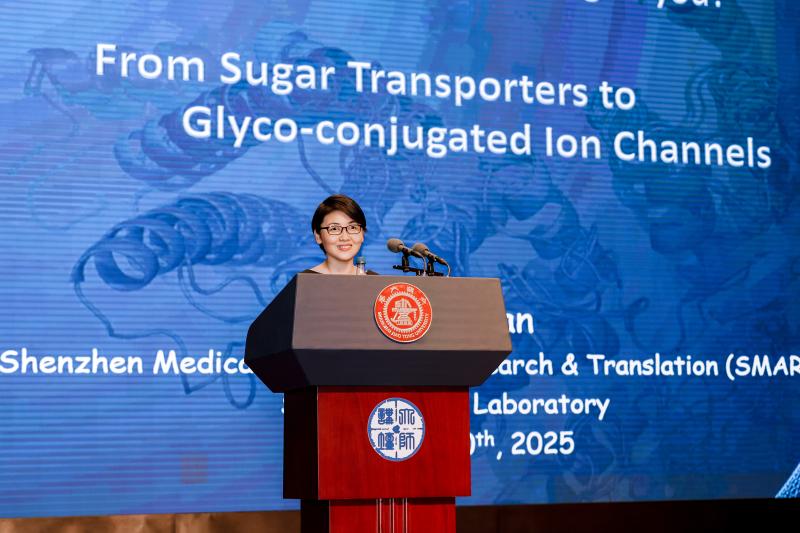Recently, Nature published online a research paper by Professor Zhao Yixin’s team from the School of Environmental Science and Engineering, Shanghai Jiao Tong University (SJTU), titled “A matrix-confined molecular layer for perovskite photovoltaic modules.” The study proposes an innovative concept of a “matrix-confined molecular layer” for hole transport layer (HTL) design. This breakthrough overcomes the intrinsic limitations of conventional self-assembled monolayer (SAM)-based HTLs—namely, molecular aggregation, stacking, and crystallization—by establishing a new technical pathway for charge transport layers with broad molecular compatibility and excellent scalability. The new approach effectively solves the long-standing challenges of film non-uniformity and interfacial instability in perovskite photovoltaic modules using SAM-based charge transport layers. Through close collaboration with CATL’s 21C Innovation Laboratory, the team successfully developed a 1 m × 2 m large-area perovskite photovoltaic module with a power conversion efficiency exceeding 20%, setting a new world record in this field.

Metal halide perovskite materials possess outstanding optoelectronic properties and great potential for photovoltaic applications. In recent years, thanks to the development of SAM-based HTLs, perovskite solar cell efficiency has advanced rapidly, with laboratory-scale small-area devices reaching efficiencies comparable to crystalline silicon photovoltaics.

Figure 1. Structure of the “matrix-confined molecular layer” charge transport layer
To address these challenges, Professor Zhao’s team introduced the novel concept of a “matrix-confined molecular layer” HTL. Using tris (pentafluorophenyl) borane (BCF)—a molecule with strong electron-withdrawing power and excellent chemical stability—as a host matrix, the researchers dispersed hole-transport molecules within the BCF matrix to form a “fruitcake-like” composite structure.
This structure allows easy formation of a controllable-thickness HTL. Density functional theory (DFT) calculations revealed that strong interactions between the BCF skeleton and hole-transport molecules effectively suppress aggregation and stacking seen in conventional SAMs. Two-dimensional Monte Carlo simulations further showed that even a small fraction of hole-transport molecules within the confined layer can achieve efficient hole transport comparable to that of ideal SAMs without stacking. Moreover, the interface between the matrix-confined layer and the perovskite exhibits high chemical stability and low interfacial recombination losses. The dense, conformal coverage of the underlying surface significantly improves film crystallinity and uniformity in large-area fabrication.

Figure 2. Large-area perovskite module and its performance
This matrix-confined molecular layer strategy is compatible with a wide range of previously reported SAM-type HTL molecules, demonstrating excellent technological versatility. It enables effective charge transport and interfacial tuning using existing molecules, reducing dependence on complex molecular design and synthesis. Applied to a 1 m × 2 m large-area perovskite module, this approach achieved a third-party certified power conversion efficiency of 20.05%, setting a new world record for large-area perovskite modules. This work not only addresses key technical bottlenecks in scaling up perovskite photovoltaic modules but also provides a new paradigm for designing charge transport layers and optimizing interfacial engineering.
Translate : Steven
Proofread by: Rebecca



